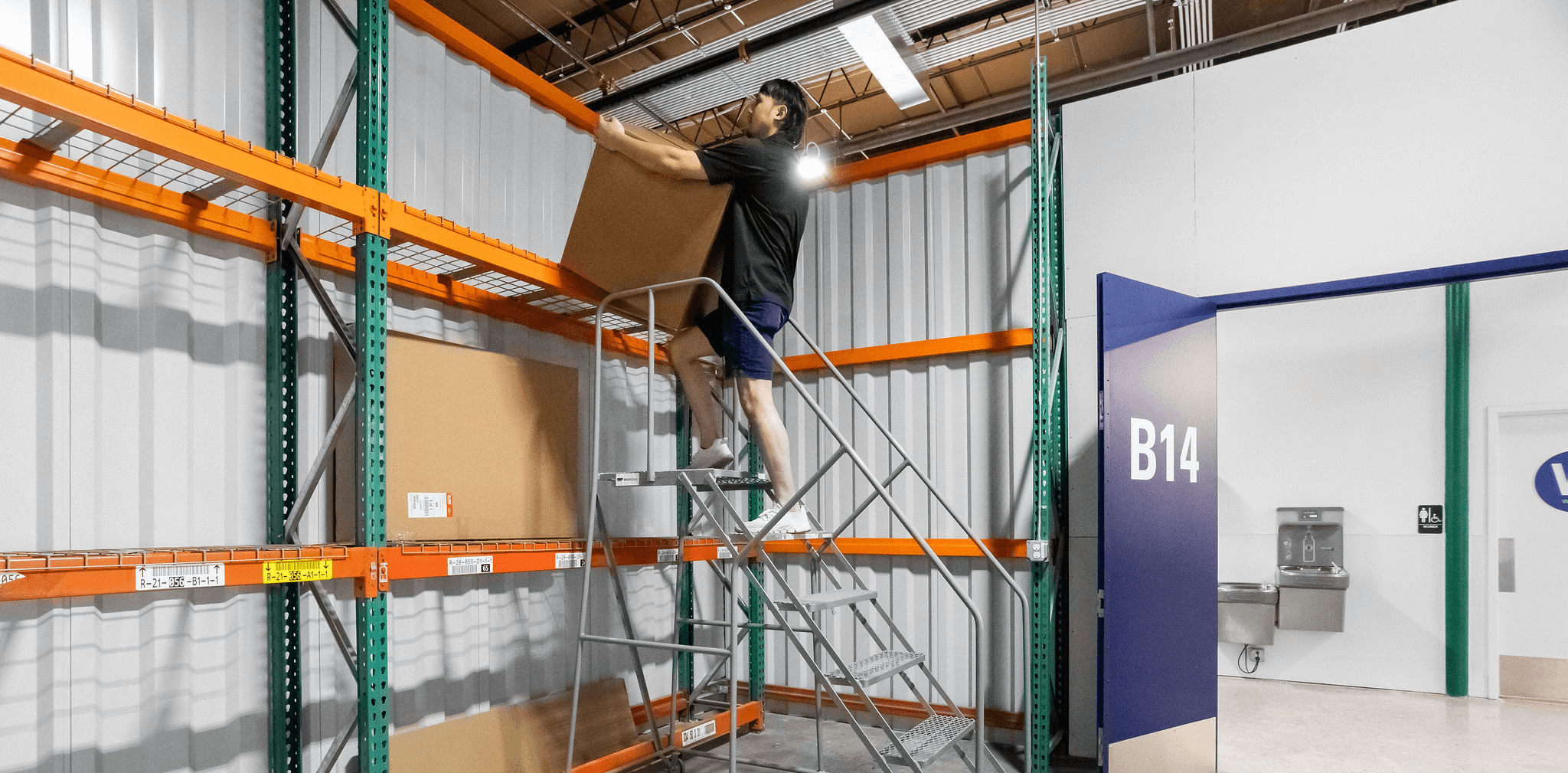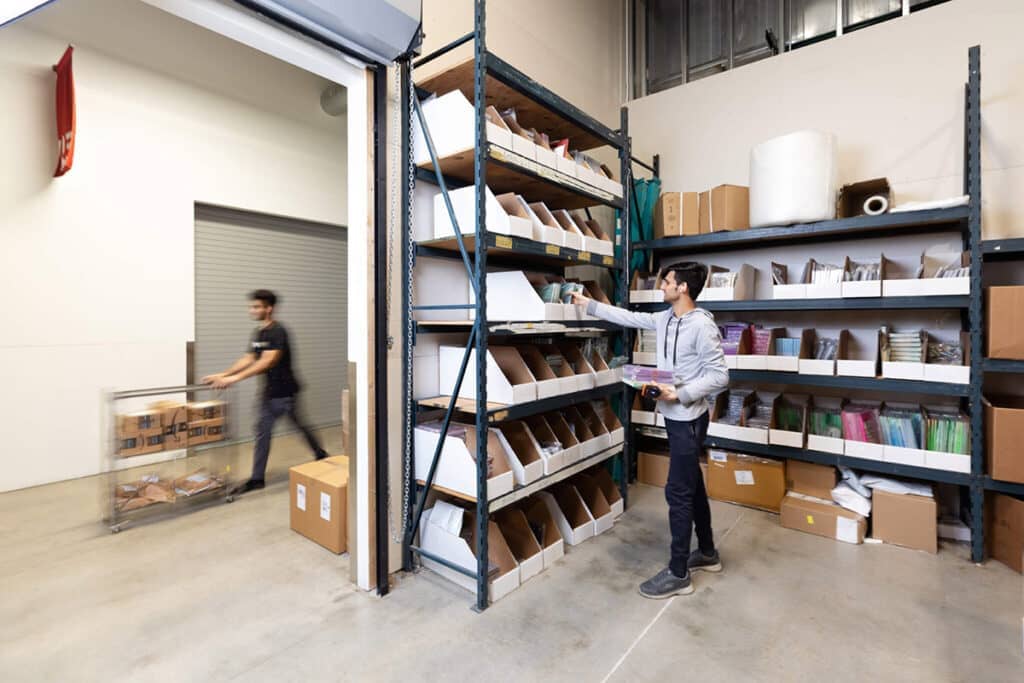In 2022, eCommerce continued to climb its rapid upward trajectory with 268 million American shoppers buying from online stores. It is estimated that in the next three years, online shoppers will grow to an estimated 284 million. If you have an ecommerce business, you may need to start thinking about expanding now. One solution is by learning more about ecommerce warehousing solutions and how they can help your business to make necessary changes for growth.
What is ecommerce warehousing? It involves the storage, securing, and preparation of products for online sales. Technically any place where you store your inventory can act as a warehouse. However, your garage will not offer your business the same space and management capabilities of an ecommerce warehouse.
How Does Ecommerce Warehousing Work?
Warehousing for ecommerce goes beyond merely stacking boxes of products and waiting for sales. Inventory management and product security are vital aspects of warehousing for all industries. In a world where online commerce fluctuates with demand, tracking inventory and protecting the goods that you have on hand are very important, to ensure prompt order fulfillment.
Inventory Management
Inventory management includes knowing what you have on hand, when the inventory levels of products change, how often to reorder inventory items, and where you should store the items in your warehouse for the best retrieval.
Product Security
Product security includes keeping your inventory items safe from theft, damage, and loss. On-site security prevents loss from theft. A well-built structure with shelves or racks to store items safely protects goods from damage caused by improperly stacking boxes. Finally, an ecommerce warehouse with an organized inventory means that you know exactly where your products are and how many you have. This can reduce the loss of time and money caused by products that disappear amid the clutter.
What Are the Different Types of Ecommerce Warehouses?
Several forms of ecommerce warehouse solutions exist. They differ in size, ownership, and operations. The best ecommerce option for your business depends on your budget, company size, inventory volume, and needed shipping times.
Bonded Warehouses
The government owns bonded warehouses. These facilities offer long-term or short-term storage of goods while awaiting customs approval. You may need to pay customs dues and fill out paperwork for incoming or outgoing products. The name comes from the “bond” issued to businesses that rent space in these facilities.
Consolidated Warehouses
Consolidated warehouses allow owners to collect goods from multiple supplies and combine them into deliveries for the same area. Inventory items do not spend much time in these warehouses, which reduces the space needed and the overall cost to use.
Cooperative Warehouses
Cooperative warehouses permit multiple businesses that sell related products to keep their goods in a shared space. Businesses in partnerships with others may benefit from the shared space and cost of a cooperative warehouse.
Government-Owned Warehouses
The government owns and operates government-owned warehouses, which provides reduced rates to businesses in specific fields. One downside to these facilities is the consequence of nonpayment. All inventory stored in the warehouse could come under government seizure if the business fails to pay its lease.
Private Warehouses
Mostly large corporations, such as Amazon, own and operate private warehouses that only store that company’s goods for sale. Manufacturers, distributors, and wholesale producers may also own private warehouses. These facilities need the resources of such large companies to ensure proper management of the warehouse and maintaining the facility.
Public Warehouses
Third-party ecommerce warehousing companies own public warehouses, which they lease space out to individual businesses for use. These facilities have various sizes and widely varying amenities that range from none to a full suite of features including security, loading docks, logistics equipment, Wifi, and more.
Smart Warehouses
Larger companies that can afford additional automation tools tend to own smart warehouses. These facilities incorporate AI, robotic arms, automated storage and retrieval systems (AS/RS), drones, and data to vastly improve inventory tracking and management of large volumes of goods.
What Factors Should You Consider When Setting Up Ecommerce Warehousing?
When setting up your ecommerce warehouse, think about how you need the space and how you will use it. Factors to think about during setup include available space, equipment, safe operations, on-site security, and inventory management.
The space will depend on your typical volume of sales and how much inventory you need to keep on hand. The first warehouse for most ecommerce businesses tends to have a small space. However, as the business grows, you should scale up the warehouse with your sales.
Small Warehouse Equipment
Equipment for storing and moving equipment can protect you or any employees you have from injury while also keeping your goods organized and safely stored. Look for facilities that provide logistics equipment, such as dollies and pallet jacks. The facility should also have racking for safely storing your inventory. Other important pieces of equipment include packing equipment and locations on-site for sending and receiving goods, such as loading docks or mail drops.
Safety and Security
Safety and security are both important factors in running a warehouse. You need to make sure that you know the requirements from the Occupational Safety and Health Administration (OSHA) for safe warehouse operations. These guidelines ensure that everyone in your warehouse stays safe while working. You must educate yourself on warehouse safety but also choose a space that allows you to have room to operate without creating hazards.
Security from on-site security cameras and only allowing access to your warehouse by authorized personnel are important things to look for in any warehouse. Products stolen from your warehouse increase your operating budget. Good on-site security reduces your chances of loss.
Inventory Management
Your inventory management will be up to you. You can choose from a variety of warehouse management systems (WMS), which are software programs used to track and order inventory. With these systems, you can look at your computer to determine if you have enough stock available for a seasonal rush. Additionally, these systems allow you to connect your ecommerce retail site. Customers can get order verification and shipment tracking automatically. Plus, the WMS can automatically order inventory items that sell out.
In brief, the features of the warehouse you use for your ecommerce business can impact your inventory management and business operations.
Your Space Is Ready
Once you understand how ecommerce warehousing works, you can fully appreciate the capacity it has to provide your business with the tools you need for growth. At WareSpace, we have several warehouse space options. Check them out to find the perfect space for your ecommerce business.
Your space is ready. Are you?




